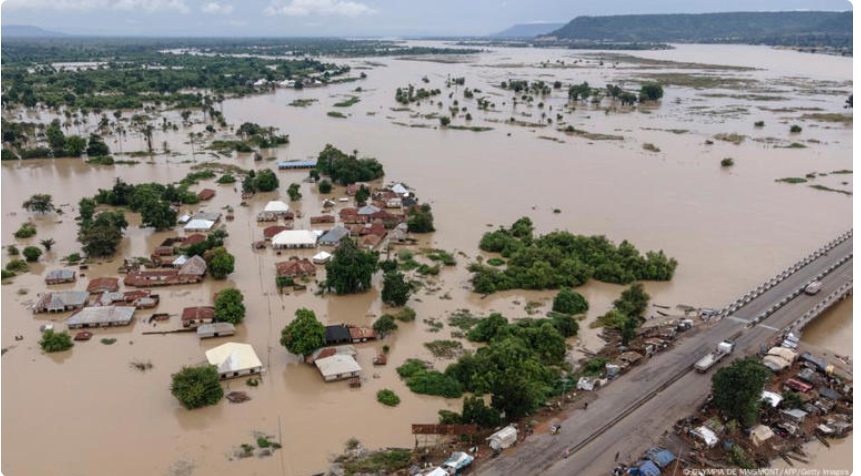By Isaac Okoro
Mokwa, Nigeria – The death toll from devastating floods in central Nigeria has surpassed 150, local emergency services confirmed on Saturday, following torrential rains that triggered widespread damage earlier in the week. The market town of Mokwa in Niger State has been particularly hard hit, with over 50 homes swept away by the floodwaters and more than 3,000 people displaced.
The flooding, which began on Wednesday, was exacerbated by the collapse of a nearby dam after hours of relentless rainfall. Mokwa, a crucial hub for traders from southern Nigeria and farmers from the north, located approximately 220 kilometers (140 miles) west of Abuja, has been left reeling from the disaster.
Ibrahim Audu Husseini, spokesperson for the Niger State emergency agency, told AFP that the final death toll is expected to rise further as rescue operations continue across various locations.
President Bola Tinubu expressed his condolences to the affected families and the people of Niger State. In a statement posted on X, he assured the public that “search-and-rescue operations are ongoing, and all relevant federal agencies have been mobilised to support the state government’s efforts.” He also stated that “relief materials and temporary shelter assistance are being deployed without delay.”
The Nigerian Meteorological Agency had issued warnings of potential flash floods in 15 of Nigeria’s 36 states, including Niger State, between Wednesday and Friday, highlighting the impending danger.
Flooding is a recurring and deadly phenomenon in Nigeria, particularly during the country’s six-month rainy season. Poor drainage systems, the construction of homes on floodplains, and the improper disposal of waste exacerbate the problem.
This latest disaster underscores the vulnerability of communities across Nigeria to the increasing threat of extreme weather events. In 2022, Nigeria experienced one of its worst flooding disasters in decades, with over 1,200 fatalities and 1.2 million people displaced. The floods also ravaged over 1.4 million hectares (3.5 million acres) of farmland, impacting food security and livelihoods.
As rescue and relief efforts continue, the focus now shifts to providing immediate aid to the displaced and preventing further loss of life. The government faces mounting pressure to address the underlying factors contributing to the country’s susceptibility to devastating floods and to implement long-term solutions to mitigate future disasters.









